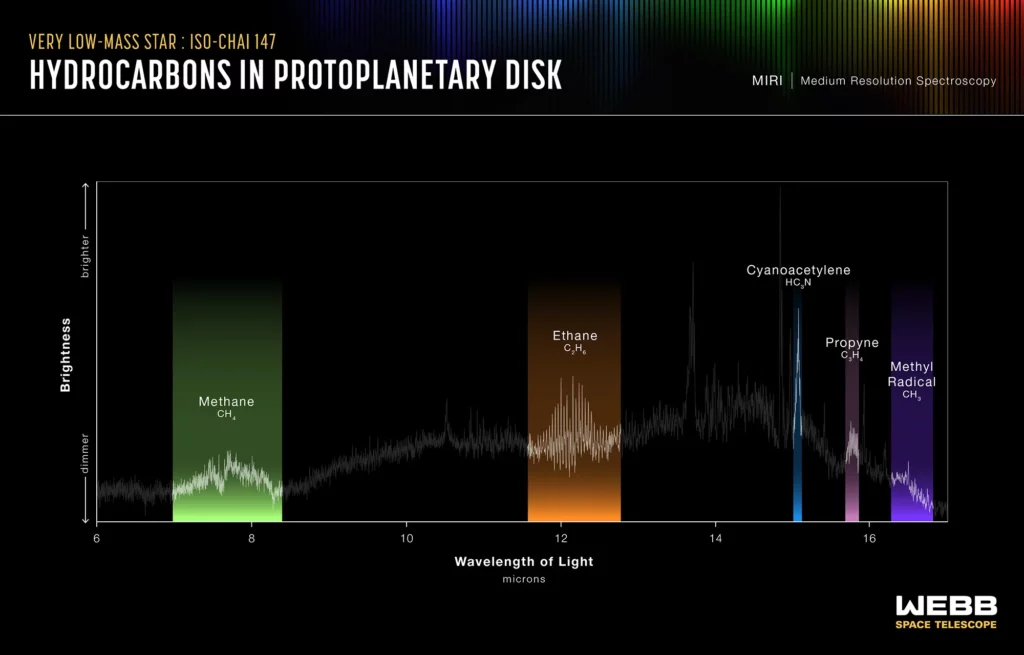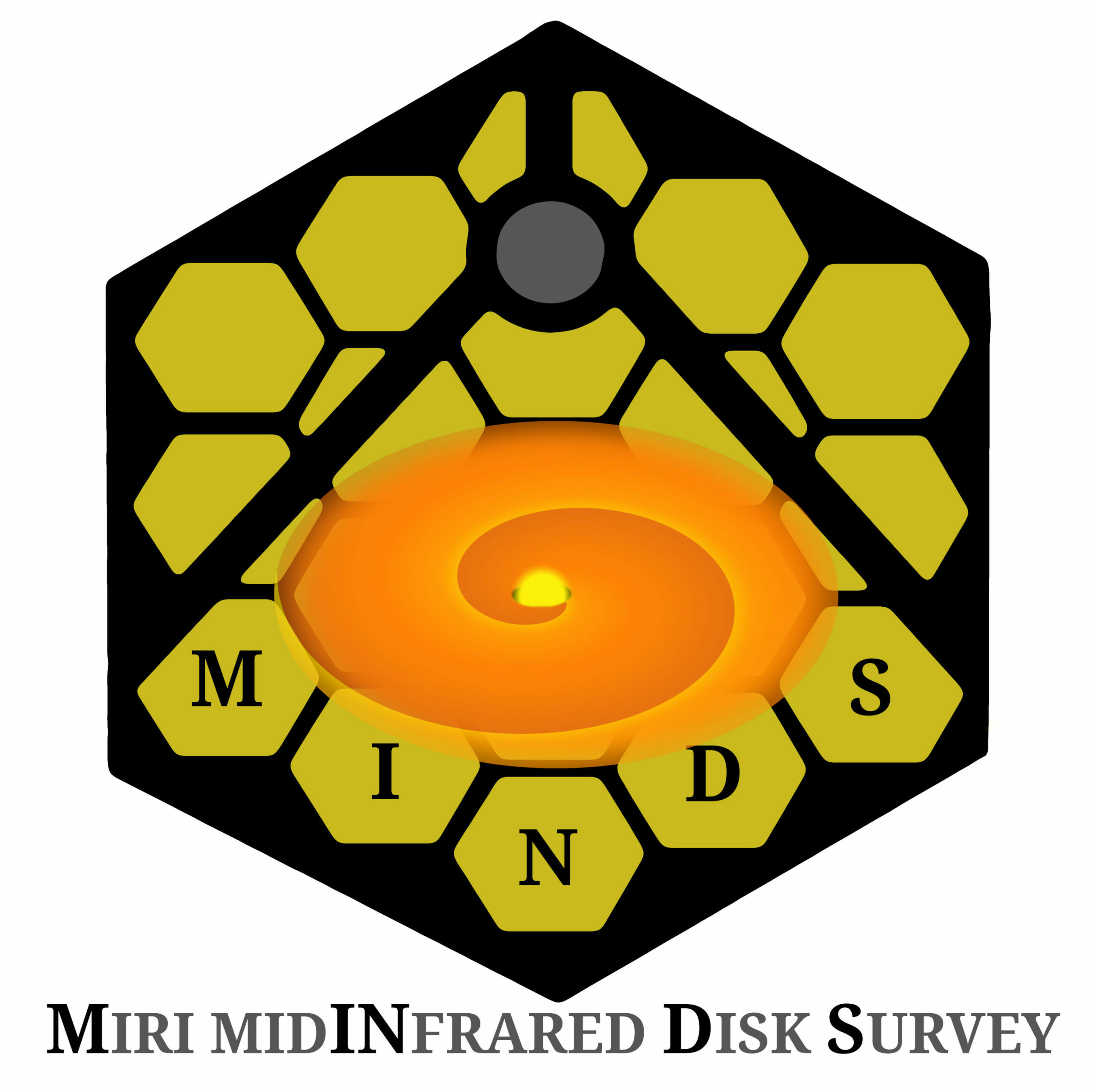
NASA, ESA, CSA, Ralf Crawford (STScI)
Very-low-mass stars (those less than 0.3 solar masses) host orbiting terrestrial planets more frequently than other types of stars. The compositions of those planets are largely unknown but are expected to relate to the protoplanetary disk in which they form. We used James Webb Space Telescope mid-infrared spectroscopy to investigate the chemical composition of the planet-forming disk around ISO-ChaI 147, a 0.11-solar-mass star. The inner disk has a carbon-rich chemistry; we identified emission from 13 carbon-bearing molecules, including ethane and benzene. The high column densities of hydrocarbons indicate that the observations probe deep into the disk. The high carbon-to-oxygen ratio indicates radial transport of material within the disk, which we predict would affect the bulk composition of any planets forming in the disk.
Scientific article:
Abundant hydrocarbons in the disk around a very-low-mass star. By: A. Arabhavi et al. [original]
